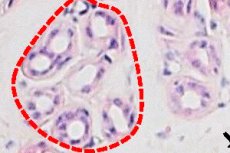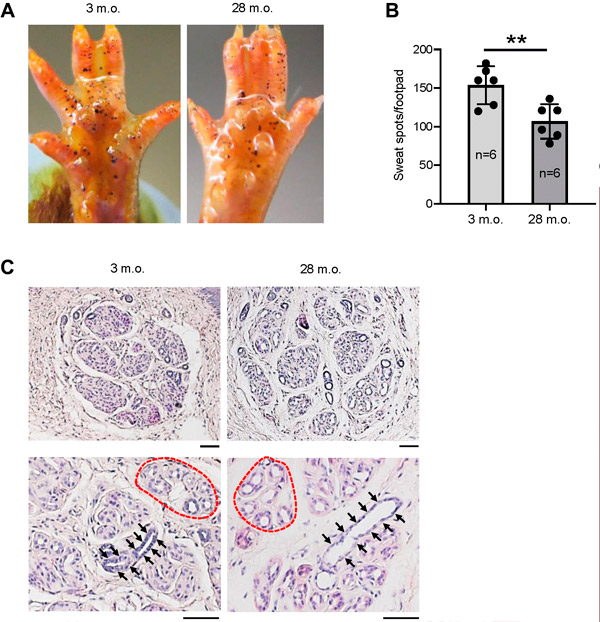Study reveals age-related changes in gene expression in sweat glands
Sist anmeldt: 14.06.2024

Alt iLive-innhold blir gjennomgått med medisin eller faktisk kontrollert for å sikre så mye faktuell nøyaktighet som mulig.
Vi har strenge retningslinjer for innkjøp og kun kobling til anerkjente medieområder, akademiske forskningsinstitusjoner og, når det er mulig, medisinsk peer-evaluerte studier. Merk at tallene i parenteser ([1], [2], etc.) er klikkbare koblinger til disse studiene.
Hvis du føler at noe av innholdet vårt er unøyaktig, utdatert eller ellers tvilsomt, velg det og trykk Ctrl + Enter.

The new study, published in the journal Aging, is titled "Characterizing Age-Related Gene Expression Changes in Mouse Sweat Glands."
Evaporation of sweat from the surface of the skin is the main mechanism of heat dissipation in humans. The secretory capacity of the sweat glands (SG) declines with age, leading to heat intolerance in older adults, but the mechanisms responsible for this decline are poorly understood.
In this new study, researchers Alexandra G. Zonnefeld, Chang-Yi Tsui, Dimitrios Tsitsipatis, Youlan Piao, Jinshui Fan, Christina Mazan-Mamcharz, Yutong Xue, Fred E. Indig, Supriyo De and Miriam Gorospe of the National Institute on Aging US Institutes of Health studied the molecular changes that accompany pancreatic aging in mice, where sweat tests confirmed a significant decrease in pancreatic activity in old mice compared to young mice.
“In this study, we first provided evidence that in mice, aging primarily reduces the number of active sweat glands,” the researchers wrote.
"We first identified mRNAs enriched in the pancreas by comparing the skin transcriptome of mutant male Eda Tabby mice, which lack pancreas, with that of control wild-type mice using RNA-seq analysis."

Characteristics of age-related changes in gene expression in the sweat glands of mice. Source: Aging (2024). DOI: 10.18632/aging.205776
This comparison identified 171 mRNAs enriched in the PG, including 47 mRNAs encoding "essential secretory" proteins such as transcription factors, ion channels, ion transporters, and trans-synaptic signaling proteins. Among them, 28 mRNAs enriched in the pancreas showed significant changes in abundance in aged skin of male mice, and 11 of them, including Foxa1, Best2, Chrm3, and Foxc1 mRNAs, were found in the category of "major secretory" proteins.
Consistent with the changes in mRNA expression levels, immunohistology showed that more secretory cells in aged pancreas expressed the transcription factor FOXC1, the protein product of Foxc1 mRNA.
"In summary, our study identified mRNAs enriched in the pancreas, including those encoding major secretory proteins, and altered abundance of these mRNAs and proteins with age in the pancreas of mice," the authors conclude.
